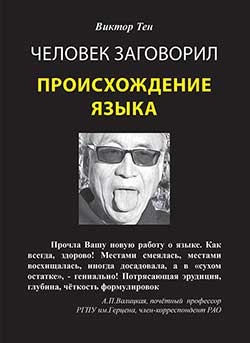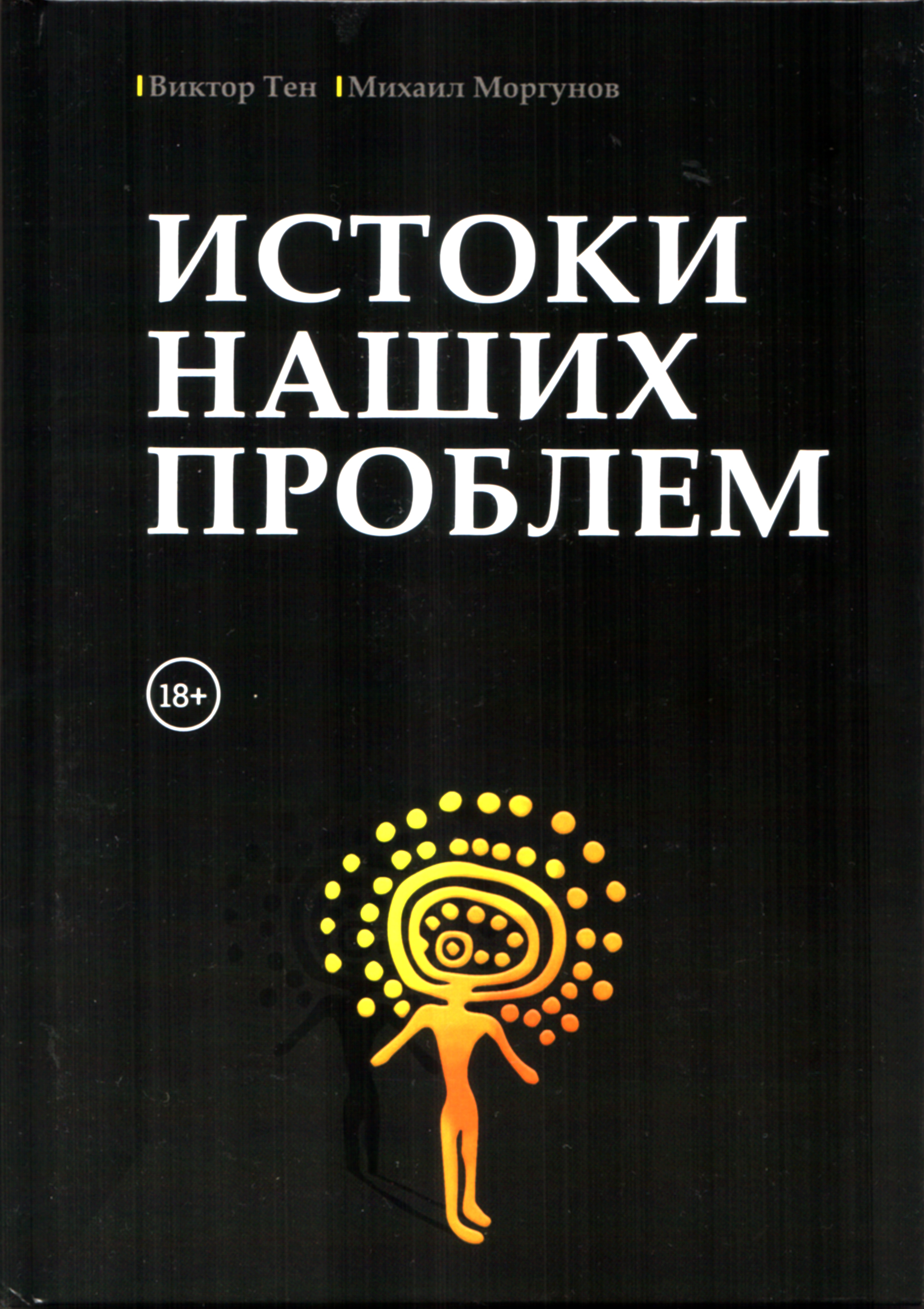Данный доклад был сделан на 12 Всемирном Конгрессе по истории языкознания. К сожалению, русский перевод был утрачен (где-то на старых флэшках, одна из которых была потеряна за границей), поэтому доклад публикуется здесь на английском. Это аутентичный, опубликованный чтением на конгрессе текст, на который можно ссылаться. Русский текст придётся восстанавливать по английскому, на что сейчас, к сожалению, нет времени, но со временем, надеюсь, сделаю.
Abstrakt
According to the fundamentals of semiotics, the sign should have two plans: the material expression and meaning. But if the phoneme does not have meaning it is not a sign. This provision is in «systemic» conflict not only with the theory of systems (the primary element of the system must be homologous to the entire system, phoneme is the primary element of natural human language, wich, in turn, is a semiotic combinatore system; hence the denial of semiological aspect of a primary element is equal to that of the whole system), but also with the basic provisions of historical anthropology (animals communicates with signs). It is only the primary sounds and their associated meanings that could be the source of human language. Determination of phylogenetic idiophones that are iconic signs of states seems possible based on the new anthropological approach.
1. About the systemic crisis of general linguistics
One of the main and may be the most important sources of the theory of Baudrillard’s, is the structuralism of Saussure which Baudrillard interpreted as the doctrine of in-system differentiation of elements with each other (Baudrillard:1976). Thus there is a concurrence one the relationship to another which call referential, another word, relation between each element of the system and what it meaning. For Baudrillard was logical, especially given the fact that his theory of simulation has more socio-economic sense to refer also to the Marx’s political economy doctrine based on the Hegelian dialectic.
In the Marx’ theory also presents as the first and as the second attitude expressed by the concepts of «use-value» and «value.» The consumer use-value — this is referential attitude, the value is a signification. Baudrillard defines the modern era as a time of simulacra, when the referential value is destroyed, giving way to a purely structural game values. In fact, we see how the game financial derivatives which are kind of simulations can be pull the real economy to the crisis, but it does not mean that Baudrillard theory is absolutely accurate. If the European and American economies are declining, this does not mean that they have been gone, it means that business activity moves in Asia.
Also, a referential connection between signs and specific objects has not gone anywhere, though it is often difficult to trace. The inadequacy of the amendment introduced by Baudrillard in Marxism creates questions to source of his such as structuralism of Saussure. One can see when a direct link between objects and simbols is lost, the human mind is characterized by ontologization of its reflection of signs. On the example of Baudrillard, one can see ontologization of signs that extends to the denial that still exists in reality. One can say that ontologization of symbolic relations having reached to the rejection of referential relationship of the elementary linguistic signs to reality was inevitable in the science of language, where the direct connection of sound and denotatum can not be traced at all.
Architect of a resolute ontologization of a sign in linguistics was Saussure who completed the Whitney’s (1875) process of bullying phonemes as a language element that has any rights in the referential relationship with denotatum. As a result, phonemes were only intra-differential relations. Saussure was right in saying that the thesis of the indifference of the primary linguistic sign has huge numbers of consequences (Saussure: 1983). One can say that not all linguists are aware of these consequences: Saussure’s thesis, which Jakobson called the pre-emitent in the whole science of language sends linguistics beyond the scientific discourse.
It is a split of linguistics with its basic semiotic and anthropological bases, as well as with the theory of systems. Fifty years ago, linguists did not exclude a phoneme from signs’ system of language and discussed only about its indifference to the meaning. But thus the fate of the phoneme was resolved. According to the basic semiology the sign shall have two plans: the material expression and the meaning. But if the phoneme does not have meaning it is not a sign.
At the end of life Saussure said that the science of language should be part of a more general science — semiology. That is correct because the subject of semiology as the science of signs, wider subject of linguistics as a science of signs of natural human language. Therefore, semiology is a science in the frame of which the object of linguistics can be determined. In this natural human language is necessary to separate from natural methods of animal communication as well as the artificial human languages. Regardless of all its functions, in the abstract of «pure existence» the natural human language is a system of signs therefore it should be determined as a type of sign’s systems.
Language is a discrete combinatorial system of signs. Then, the logic of the definition pushes us to search for a primary element of this semiology system. Here we stop to the intractable contradictions that suggest to say about the systemic crisis of general linguistics. What is the basic unit of language? Of course, it is the phoneme. That is indisputable. The phoneme can be decomposed as an atom, however, within the science of language it is irreducibled as the atom in all sciences except quantum mechanics. Linguists can dissect a phoneme, but only for diagnostic purposes. They do it when examined allophones but cannot cut it to parts due to this is another science — acoustics.
On the other hand, it is impossible to assume the primary unit of language is morpheme or lexeme because they are composed of phonemes and thus completely reducible to a simple part by the phonetic analysis. Linguistic unit which any pupil can analyse can not be primary. This is evidenced by not only common sense, but logic, it is sufficient to recall Leibniz’s principle of elementary primitives. If language is a sign system it is logical to assume that a phoneme is the primary sign of a language.
But according to modern concepts, the phoneme is not a sign, i.e. language is a semiology system, whose primary units are not signs. A language is truly unique: there is no other sign’s discrete combinatorial system in which the primary unit is not the sign. Nobody did attempt to theoretically justify the possibility of such systems.
It is surprise how easily linguists get rid of common logical foundations. A trivial example: in search of language universals, semantisists have rejected Leibniz’s principle that primitives must be elementary (Wierzbicka: 1996). For example they included among the primitives personal pronouns, which are complex synthetic concepts that are acquired by children later than other language clusters. One can say if the fundamental principle of scientific methodology prevents the selection of linguistic universals it is worse for the principle.
There is a principle of homology in the system theory which states that the primary component of the system must be homologous to the whole system. For example, the World Ocean consists of oceans, seas, lakes, rivers, streams and puddles. Essentially, this is a water system because its primary element is a water molecule. The molecule itself is composed of three atoms of the two gases, but no one can determine the World Ocean as a gas system or as a system of pools. Its system particular is determined by the water molecule with its stability and specific characteristics.
Is it possible to define language as a system of signs if it is the primary element is not a sign? Of course not. The honest scientific formulation of the problem requires recognising the phoneme as a sign or abandoning the definition of language as a sign system. But in this case the language can not be determined. Semiology systems from communication of the bees to the language of mathematics based on primary units which are the signs. Elements of bees’ communication are signs as well as the primary elements of artificial human languages are signs. Is a human language an exception? If mathematical and bees’ languages are just one thing why the natural human language is something else?
We can say that there were initial sounds of human language, some phonemes, which formed the basis of Glottogony however the referential relationship is not traced. On the example of Baudrillard, we see how easily lost a sense of reality when people find themselves in a world of simulacra, a world of signs, which are signs of signs.
Initial phonemes had to mean something because the sounds of animals always mean something and our ancestors certainly were not an exception. The meaning must have only phonemes (the elementary sounds). The statement that phonemes are not the signs mean a semiologic limit. It is mean that semiology cannot and should not engage in phonemes. In this case, what makes linguistics in phonology which is part of the semiosphere? One can offer a syllogism. The first thesis: linguistics is the science of language, which is a sign system. The second point: the phoneme is not a sign. Conclusion: phonology is not a linguistic discipline. Then what is phonology? And what is linguistics without phonetics? The practice denies bad theory. Linguists believe phonology is a branch of their science and their prolific activities in phonology itself is the best proof of the falsity of the thesis that the phoneme is not a sign.
It is mean that the basis of language has put no iconic signs but symbols which are conventional signs and pure established by agreement abstractions. Part of phonemes, even most of them, are conventional signs designed and installed by people in the development of languages. However, at the same time, as regarded I.Baudouin it should be the primary phonemes which have ‘the mental equivalent’. It could be only audio iconic signs whose imaged connection with the «mental equivalent» thinkable as far as we attribute the minor sounds with sad and majeure sounds with happiness. It could not be conventional signs and symbols because in this case, the science must be closed. Symbols at the beginning of language are abnormal; it can be only as someone’s Providence. In this case, linguistics should not be a part of semiology but a part of theology.
2. The way of grain
This problem is directly related to the problem of Glottogonic. It is known, that at present many reputable linguistic publishers do not consider articles about the origin of language. There is the conventional prohibition like the taboo on the publication about the perpetual motion. The last prohibition is based on the fundamental physics laws. What is the basis on Glottogonic taboo? It is based only on the assumption that phonemes have not referential status. Think about the origins of natural human language which based on morphemes it is meaningless because in the animal world there are no morphemes. On the other hand, we know that signic animal communications are relevant, they have meaning. Therefore, in terms of semiology, Glottogonic’s problem is a problem of the recovery of the referential status of the primary tones. The original system of primary phonemes was suggested by the author (Теn, 2011) and I would like to offer an example of analysis of primary phonemes.
When I use the reconstruction method ‘ontogeny-phylogeny‘ which currently do not use by modern linguists due to after several unsuccessful attempts to use. One can say that the rejection of one of the most productive of evolutionary techniques is the example of another capitulation because anthropological linguistics in the context of Glottogonic is part of paleoanthropology and then this technique works. Consequently, the refusal is unjustified.
The first sound which creates a child appearing in the light is a sonant which consists of two basic consonants «p» and «f», which are mixed with some vowels.
Most people believe that the first word a child says is «mama» (“mami”). In reality, from the first child’s diphthong «pf» which determined by the human anatomy to the word «mother» is the very long way. A child’s anatomy is not yet ready. During three months a newborn has high larynx, tongue pushed forward and upward closing the hole between the nasal cavity and and mouth cavity. As a result, the nasal resonance is deleted and the word «mama» with two nasal sounds cannot be pronounced.
In contrast to all animals people have the anatomical exclusive as lips which are always tightly closed and even blinded to each other mucous membrane when human is in water. Surfacing in the light of God a child needs a breath of air but before it should vigorously unstick its lips uttering at the same sound “pf ….” This is the initial phoneme, which is unquestionably sonant but not a refined sound. Our exclusive anatomical characteristic defines the beginning of a language. The first body of speaking is not tongue but lips. Generally, a tongue comes very late in this process.
The newborn must also swallow air coming to light from the water. To do this he must unlock his stucked lips which not all babies can do without help. They make it much more difficult than say a swimmer because newborn lips were blinded sticky fluid all the previous life both materially and psychologically. Moreover they are firmly molded by not only to saliva but clotted blood.
Being born a child suffers terrible stress, it keeps scary unconscious fear and open a mouth means opening yourself to the world before which the infant is defenseless. The primary unconscious mind is always fixed in the archetype in contrast to the conscious. Opening of lips by infants means full rejection of the former existence where it was absolutely impossible to unlink because the uterus is “the ocean”. Before the birth, a child was in the ocean firmly clasped lips and he does not know that now there is no ocean. He is not ready to die, it is for him absolute shock. One can say that at this point it lays very important mental constants. «Trampling down death by death» begins from here.
The first opening of the lips is not a less important occurrence than the actual childbearing. Even the opening of the eye which takes place later has no such meaning. Opening of the lips means neither more nor less than “the way of grain”: to die to be born. On the one hand, instinct tells to a child that unlocking of the lips is death on the other that there is not the alternative way.
When a person dies he always is closed his mouth and washed with water which symbolizes the return to the primary ocean. Of course, meanings are generated by the archisonant «pf» which is the purely physiological sound, according to the definition, can not be monosemantic.
Disgust and Acceptance, Despair and Desperation of resoluteness, pain (the first opening of the tender lips is always associated with pain, sometimes with blood) and Grace (unexpected happiness because instead death oxygen of life flies in lungs), Horror of punishment by death and the Rapture of the acquisition of life… That are the primary meanings in dichotomy senses. Of course, these meanings in the identity of their contradictions managed to fix as the codes of the brain at the first opening of the lips.
The primary arhisonant has generated simultaneously two linguistic universals. Firstly, the «pa» as a determination of a fatherhood and doubling of which gives the word «pa-pa.» Pierre Bankel, Alain Mattei de Ethan analysing thousands of modern languages show that the first (the oldest) word is “papa” (not “father”, not “dad” namely “papa”); it is present in 700 out of 1000 the considered modern languages. (http://www.izvestia.ru/news/292469).
Secondly, arhisonant «pf» being psychologically ambivalent and a sound expression of a binary code of the brain has created an another international word: «Fu». This is the international diphthong express disgust and rejection. Do not forget that this binary code was formed at birth before any communication. This is internalization of the newborn’s unconscious relationship to the world.
On the one hand, the great dependence and desire to merge, on the other, disgust and fear. It is not just fear but holy horror and delight of the border situation between existence and non-existence. When a child opens his mouth for the first time he overcomes the Great forbid whereby his lips were tightly closed and breaks the fetters of Being. At this point he becomes a suicide which after an act of suicide is unexpectedly in other huge and harsh world. On every square inch of his body is pressed kilogrammes of atmosphere. But a child gains life.
After the first arhisonant split into individual phonemes, «P» has become a very common consonants that are present relatively in nearly all languages somewhere with aspiration and somewhere in its purest form. On this arhisonant was put an ambivalent (due to psychological advantage and disadvantage) mental load associated with the definition of the paternal foundation. «Fu» is the injunction word and the function of limitations always played a fathers. One can see that the disintegration of the initial sonant into discrete elements generates new pairs of contradictory identities.
The phoneme «f» had an extremely interesting fate. It is interesting, that there are languages with a large number of words with «F» (Chinese, Greek, Celtic languages) and small number with «F» (Latin, German) or absent these words except for foreign ones.
In Greek there are a lot of words with the letter “f» which was introduced in the languages of neighbours thanks to its high culture as well as many theonyms to «F». This does not connect with high high knowledge of the the Greek mythology. The Roman mythology have been studied analogously however the letter «F» meets more than twice rarer as beginning of names of the persons and these names associated with the Greek loanwords.
Also, practically unknown names on the «f» in the Old East Slavic or Indian ancient mythologies. In German and Russian individual letters appeared only through Greek borrowings specifically to refer to the numerous Greek words with “f” (“ph” in German, «ферт» and «фита» — in Old East Slavic).
P.Chernikh (Chernikh: 1993) notes «The sound of «f» in Russian is the latest phenomenon and it is used only in borrowed and echoic words». This thesis raises questions. Slavic and ancient Greek languages are the relatively close common source. There were not acoustic problems in the pronunciation of the phoneme «f» for users of Slavic languages. There is no one but two characters «f» in the old Russian alphabet. Why the phoneme was discriminated?
There is only one explanation of the discrimination: some mentality. Users of the Old East Slavic avoided employing this phoneme moreover, in the 19th century Russian avoided it. For example, peasants of the landlord Korf called not «корфовы люди» but «корховы люди» (not “Korf–people”, but “Korkh-people”), the hero of Leo Tolstoy Filippok call himself as “Hvilipok”. Currently, in the Russian province one can hear: «надень хвартук» instead of «надень фартук» («Put on your apron»). Maybe this grandmother does not know the phoneme «f»? But why does she call consistently her drunken neighbour «фулиган» instead of «хулиган» (“hooligan”)? Is it because that in a negative context “f” can be used?
On the other hand, brave youth introduced «forbidden» phoneme in its vocabulary, applying it to deliberate. In April of 1831, Pushkin wrote to Pletnev:
«…Ради Бога, найми мне фатерку… Фатерка чем дешевле, тем лучше …». (“… For God’s sake, hire me flat… Flat the cheaper the better ….”)
No need to think that Pushkin did not know how to spell the word «квартира». March 26 he wrote to the same destination:
«А дома, вероятно, ныне там недороги: гусаров нет, двора нет – квартер пустых много». (“ Probably, a home there is now inexpensive: no hussars, no the court – there are a lot of empty flat”.
The aversion in almost all languages is expressed by the phoneme «f» or allophones, namely: «fu», «pfu» «tfu», etc. Sometimes it is enough «фыркнуть» («firknut», — to snort), just to say «f» (Russian expression of negation). There is phonological connection between the word «taboo» with the linguistic universals like «tfu» understood in all languages.
Why the primary arhisonant was collapsed so that on “p” lay the large share of the positive content but on “f” negative one? The fact is that the “p” is a bilabial sound but “f” is a labial-dental. To pronounce “f” it is necessary to expose the upper jaw to the lower lip. This sign of disgust and threat in all animals. For example a threatening dog raises the skin folds to show the upper jaw. Big dogs do it silently and it is a serious threat. Actually, they carry the articulation which carries a person saying “F”. It is not occasionally, the internationalist forbidding word for dog is “fu”.
Literature
1. Baudrillard, Jean (1976): L’Exchange simboligue et la Mort.Paris:Gallimard
2. Chernikh, Peter (1993): Historical and etymological dictionary of modern Russian (Istoriko-etimilogicheskiy slovar sovremennogo russkogo aysika). Moscow. (In Russian), vol.2, p.325
3. Pushkin, Alexander ([1831] 1988) “Letters to Pletnev” (“Pisma Pletnevu”): Pushkin’s life (Jizn Pushkina). Moscow (In Russian), pp.408, 409
4. Saussure, Ferdinand de ([1916] 1983): Course in General Linguistics (trans. Roy Harris). London: Duckworth
6. Ten, Victor (2011): Archeology. The origin of the body, mind, language (Archeologiya. Proischojdenie tela, razuma, ayzika). Saint-Petersburg (In Russian): Kiryanov
6. Wierzbicka, Anna (1996): Semantics: Primes and Universals. Oxford: Oxford University Press







